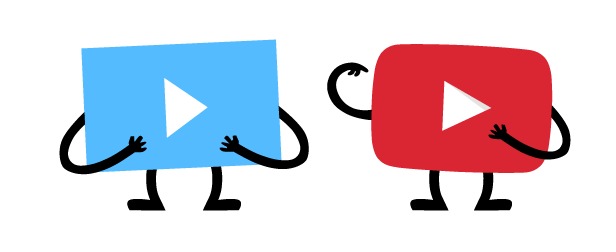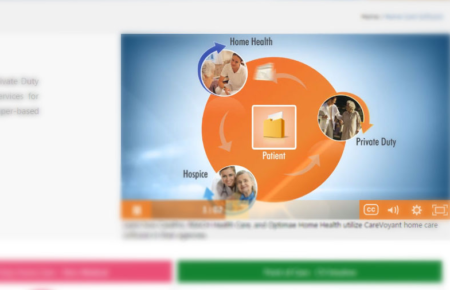Business Video Hosting vs. YouTube: What’s the Difference?
What’s the point of paying for a video hosting service when YouTube is free?!
YouTube is the world’s biggest video platform, it has 1 billion users per month, and it’s owned by Google, so it must be good for SEO, right?
Why on earth would anyone use Wistia for their marketing videos? Phil Nottingham of Wistia will be portraying two personified video players to explain…
Wistia:
-
Speed1x
-
Quality540p

Thanks for reporting a problem. We’ll attach technical data about this session to help us figure out the issue. Which of these best describes the problem?
Any other details or context?
YouTube:
Hover on the player to view all the features that Phil references throughout the video.
Different platforms, different purposes
As you can see, they’re two very different platforms, with very different purposes. YouTube is designed to serve content creators looking to monetize their videos, and organizations investing in big brand-building advertising campaigns. Wistia is designed exclusively to serve companies using video on their websites for marketing, support, and sales.
Essentially, Wistia is ideal for “on-site” videos, and YouTube is a social video platform that requires a unique strategy.
Where Wistia is better
Wistia is preferable if you’re looking to drive traffic to your website, improve conversions, or increase engagement across the websites you control. Custom video players tend to get more clicks, video SEO helps you drive more traffic, and email collectors help you generate leads, which you can send into your CRM of choice.
Wistia’s analytics also provide much more detail than the data offered on the YouTube platform. Rather than providing sampled and incomplete data, Wistia’s in-depth analytics show you how your audience consumes and interacts with your videos. You can get an aggregated view of a video’s performance with our engagement graphs, or you can drill down to see how individual viewers are watching your videos with our heatmaps. You can even attribute specific viewing activity to a viewer’s email address.
Wistia’s in-depth analytics show you how your audience consumes and interacts with your videos.
Where YouTube is better
YouTube is better if reach is more important to you than traffic acquisition. YouTube videos typically drive traffic to YouTube.com from search and social, which means you can’t track interactions with your content as effectively, and won’t be able to drive as many profitable actions directly from your content.
If you work for an FMCG (fast-moving consumer goods) brand, or your customers primarily interact with your brand offline, then prioritizing reach over on-site interactions and tracking may be a fine decision. Equally, if you’re undertaking a big branding campaign in order to increase word of mouth, and you don’t mind rescinding control of how people watch your video, then YouTube is a more appropriate option.
Can I just use both?
Yes (but with a caveat).
Many companies choose to use Wistia for videos embedded on their websites in order to benefit from the advanced tools and analytics, but then also upload videos to YouTube in order to benefit from the social reach that a presence on YouTube provides.

This is an entirely legitimate approach, but be aware that having the videos in two places can sometimes cause cannibalization in both search and social. YouTube can sometimes rank above your domain for competitive keywords, and if users choose to share a YouTube version of a video rather than the version of the video on your site, then you’ll miss out on the user-based tracking that Wistia provides. This can be an acceptable price to pay for the additional reach, but each business needs to assess this risk and opportunity in accordance with their own marketing priorities.
YouTube shouldn’t be treated like a cupboard.
YouTube also shouldn’t be treated like a cupboard. It’s important to remember that YouTube is as much a social network as it is a video hosting platform, and that when audiences watch videos on YouTube, they typically do so without any further context about your brand or the video in question. As such, not all of your videos will necessarily make sense to a broader audience browsing on YouTube.com. YouTube should be used strategically, as part of a wider video marketing strategy, and not just as a repository where all videos are held and hosted.
This article originally appeared on Wistia’s Blog as”Wistia vs. YouTube: What’s the Difference?“































